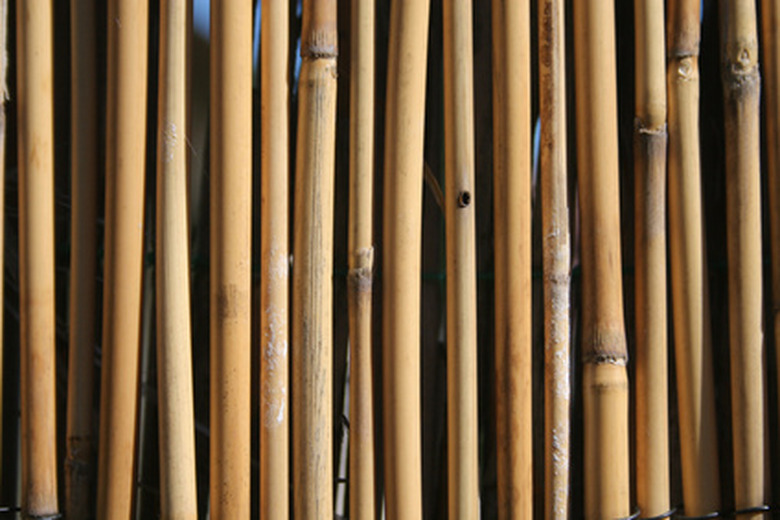Difference Between Reed And Bamboo Fence
We may receive a commission on purchases made from links.
Bamboo and reed are both grasses belonging to the Poaceae family. Bamboo canes are harvested from species belonging to the subfamily Bambusoideae, whereas reeds branch off into the Arundinoideae subfamily. Reeds and bamboo plants grow much faster than trees, making them popular fencing materials for people who want to use rapidly renewable resources.
Although reed and bamboo fences look similar enough for some people to use the term "bamboo fence" for both, reed fences feature "slats" with a smaller diameter than those in the average bamboo cane fence. These fences are made of dead plant materials and are not to be confused with a living bamboo fence, which offers exceptional height and longevity but can be difficult to manage.
Pros and Cons: Bamboo Fences
Pros and Cons: Bamboo Fences
A bamboo fence — also called a bamboo pole, cane or stick fence — uses the round culms (stems) and branches of bamboo plants. These are stripped of all leaves, laid in a row and held together with galvanized steel wire.
Bamboo is an incredibly strong and durable material with a tensile strength higher than steel, which means it can remain intact even if boisterous Fido jumps on it or the kids hit a baseball into it. However, bamboo may split in response to changes in humidity and moisture. Treated bamboo will resist water and mold, but for the greatest longevity, it should be installed so that it does not come into contact with the ground. It also resists invasion from termites and ants, but carpenter bees can present a problem.
The main downside of bamboo fences is the cost, but they have become more affordable in recent years as their popularity has increased. A bamboo fence has a similar price per linear foot as a wooden privacy fence. However, bamboo fences are easier to install on your own, which allows you to save money on labor.
Reed and Bamboo Fence Differences
Reed and Bamboo Fence Differences
Reed fences are made from peeled freshwater reeds, which look like thin bamboo canes. The peeled reeds are woven into rolls and panels between strands of galvanized steel wire. A reed fence offers a slightly different aesthetic than a thicker bamboo fence. Reeds are still a durable and long-lasting material, but they are not as strong as bamboo. However, a reed fence is often more affordable than a bamboo fence.
Reed and Bamboo Fence Similarities
Reed and Bamboo Fence Similarities
Both reed and bamboo fences are available in many different heights, densities and colors, allowing you to use them as 6-foot privacy fences or shorter decorative fences. Both reed and bamboo fences come packaged as slats or rolls, and it's possible to install them over existing chain-link fences or between wooden fence posts as a DIY project.
The average life span of a reed or bamboo fence is estimated to be around 15 to 20 years. For best results, the materials need to go through a treatment process first, which typically involves embedding boric acid into the bamboo or reed fibers. Without this treatment, the fibers become far more susceptible to mold and rot and will last only a few years.
Just like wood, bamboo and reed can be painted any color and protected with sealants. They are both versatile and environmentally friendly options. The choice of bamboo versus reed depends on your budget and how thick you want each "stick" to appear in the fence.
